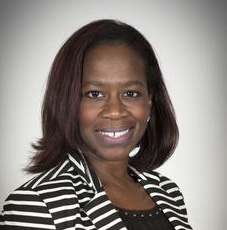By Rev. Tamara O. Kersey
So Peter got up and went with them; and when he arrived, they took him to the room upstairs. All the widows stood beside him, weeping and showing tunics and other clothing that Dorcas had made while she was with them. Peter put all of them outside, and then he knelt down and prayed. He turned to the body and said, “Tabitha, get up.” Then she opened her eyes, and seeing Peter, she sat up. He gave her his hand and helped her up. Then calling the saints and widows, he showed her to be alive. This became known throughout Joppa, and many believed in the Lord (Acts 9:39-42).
In my work as the pastor of a small congregation in a rural area of North Carolina, I’ve been able to inaugurate the Social Action Commission. The inauguration of this commission was fueled by a partnership built with a local Social Justice Exchange, helping to build bridges with persons with diverse demographics, economic status, race, gender, as well as varying belief systems.
Some within this group, especially Millennials, have no desire to attend or partner with any religious entity. Millennials share in detail why they are no longer interested in a partnership with “church” but they want to partake in meaningful work that helps shift dynamics, meet the needs of marginalized persons, and help to dismantle disparities in ways that are impactful. Their stories remind me of Tabitha.
In this particular text, there is a grieving community. For this community, Tabitha was more than a mere woman. Today, as a disciple, Tabitha would have been the outreach and evangelism ministry, grief counselor, and food pantry coordinator, in addition to being a seamstress. No wonder there were weeping widows who mourned Tabitha’s passing. They saw the ministry that gave them hope die before their eyes. Their hope seemed dead; and in our text, we find them crying.
So it is with those I encounter in the trenches and along the highways and hedges. I find people looking for hope, love, and someone to care about them. They find that the very thing that should give hope is obsolete and, as illustrated in our text, deceased.
Tabitha represented a monument of faith that moved the hearts of the people. It is the call of churches and ministries to move beyond being monuments of faith in physicality only. We cannot ignore the cries of our community, close our hearts and spiritual doors (ears) to the cries of those in need, and turn a blind eye to the weeping, hurting, and impoverished. Can you hear the cries of empty pantries? Can you hear the cries of those who have a love deficit Can you hear the cries of those grappling for meaning and possibly on the verge of suicide?
Lastly, I encounter the LGBTQ community on my journey. According to the June 2017 Centers for Disease Control and Prevention statistics, nearly 29% of LGB youth have attempted suicide at least once in the prior year, compared to six percent of heterosexual youth.
There is a monumental call to touch people’s lives and not measure their worth by their tithe, musical gifting, or charismatic worship, while simultaneously demonizing and ostracizing them. Most communities today are in a compassion crisis.
The world is weeping and some of us are dying in our zeal, passion, and motivation. Tabitha was raised because the Lord didn’t want compassion to die in the community (church). Let us rise us now and answer the cries that are within our sanctuaries as well as beyond the walls of our church.
The Rev. Tamara O. Kersey is an ordained itinerant elder in the Second Episcopal District of the AME Church. She is a 2013 graduate of the M.Div. program at Shaw University Divinity School. The Rev. Kersey is the pastor of Maxwell Chapel AME Church in Graham, North Carolina.





